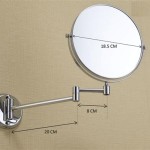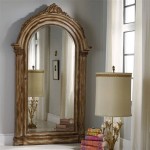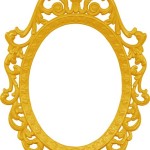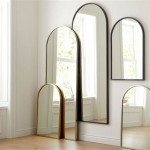Do Convex Mirrors Invert Images?
Convex mirrors, characterized by their outward curvature, offer a unique perspective compared to their concave counterparts. They are frequently employed in various applications, from security surveillance to automotive side mirrors, due to their wide field of view. This characteristic, however, raises the question of how these mirrors affect the orientation of the images they reflect.
Image Formation in Convex Mirrors
Understanding image formation in convex mirrors requires a grasp of the behavior of light rays upon reflection. When parallel light rays strike the curved surface of a convex mirror, they diverge, reflecting outwards. These diverging rays appear to originate from a single point behind the mirror, known as the virtual focal point. This virtual focal point plays a crucial role in determining the characteristics of the reflected image.
Virtual and Upright Images
The images formed by convex mirrors are always virtual, meaning they are formed by the apparent intersection of light rays, not the actual convergence of light. This means the image cannot be projected onto a screen. Furthermore, the image is always upright, meaning it maintains the same vertical orientation as the object being reflected. This is a key distinguishing feature compared to concave mirrors, which can produce both upright and inverted images depending on the object's distance from the mirror.
Diminished Image Size
Another characteristic of images formed by convex mirrors is their diminished size compared to the actual object. The image appears smaller than the object, irrespective of the object's distance from the mirror. This reduction in size is a direct consequence of the diverging nature of the reflected light rays. The further the object is from the mirror, the smaller the image appears.
Wider Field of View
The diverging reflection pattern of convex mirrors provides a significantly wider field of view than that offered by plane or concave mirrors. This wider field of view allows for greater coverage of the surrounding area. This characteristic makes convex mirrors invaluable in applications such as security mirrors in shops and the passenger-side mirrors in vehicles, where maximizing visibility is paramount.
Lateral Inversion in Convex Mirrors
While convex mirrors do not invert images vertically, they do exhibit lateral inversion. This means the left and right sides of the image are reversed compared to the object. Imagine raising your right hand in front of a convex mirror; the reflected image will appear to raise its left hand. This lateral inversion is a common characteristic of all mirrors, including plane and convex varieties.
Applications Exploiting Convex Mirror Properties
The unique properties of convex mirrors – their ability to produce virtual, upright, diminished images and their wide field of view – are leveraged in numerous applications. In vehicles, passenger-side mirrors are often convex to provide a broader view of the surrounding traffic. In security settings, convex mirrors allow for surveillance of larger areas, deterring theft and enhancing safety. They are also used in some telescopes and optical instruments to manipulate light paths and broaden the observable field.
Comparing Convex Mirrors to Other Mirror Types
In contrast to concave mirrors, which can produce both real and virtual images, convex mirrors always form virtual images. Concave mirrors can also magnify images, while convex mirrors always diminish them. Compared to plane mirrors, which produce virtual images of the same size as the object, convex mirrors offer a smaller, wider view. These distinct properties determine the suitability of each mirror type for specific applications.
The Absence of Real Image Formation
A fundamental difference between convex and concave mirrors lies in their ability to form real images. Concave mirrors can create real images that can be projected onto a screen when the object is positioned beyond the focal point. Convex mirrors, however, never form real images due to the diverging nature of the reflected light rays. The reflected rays always appear to originate from a virtual point behind the mirror, preventing the formation of a real, projectable image.
Understanding the properties of convex mirrors, particularly the formation of virtual, upright, and diminished images, and their wide field of view, is crucial for appreciating their diverse applications in various fields, from everyday life to specialized scientific instruments.
Is It Right A Convex Mirror Always Forms An Inverted Image Quora

Laterally Inverted Convex Mirror
Can Convex Mirrors Produce Lateral Inversion Quora

Question Recalling Whether The Image Produced By A Convex Mirror Can Be Inverted Nagwa

Real Image Versus Virtual Convex Mirror
Objects In The Mirror Are Actually Images Article Khan Academy
Can Convex Mirrors Produce Lateral Inversion Quora
Is It Right A Convex Mirror Always Forms An Inverted Image Quora
Why Do Magnifying Mirrors Turn Images Upside Down Quora

Difference Between Concave And Convex Mirror With Diagram Formula








